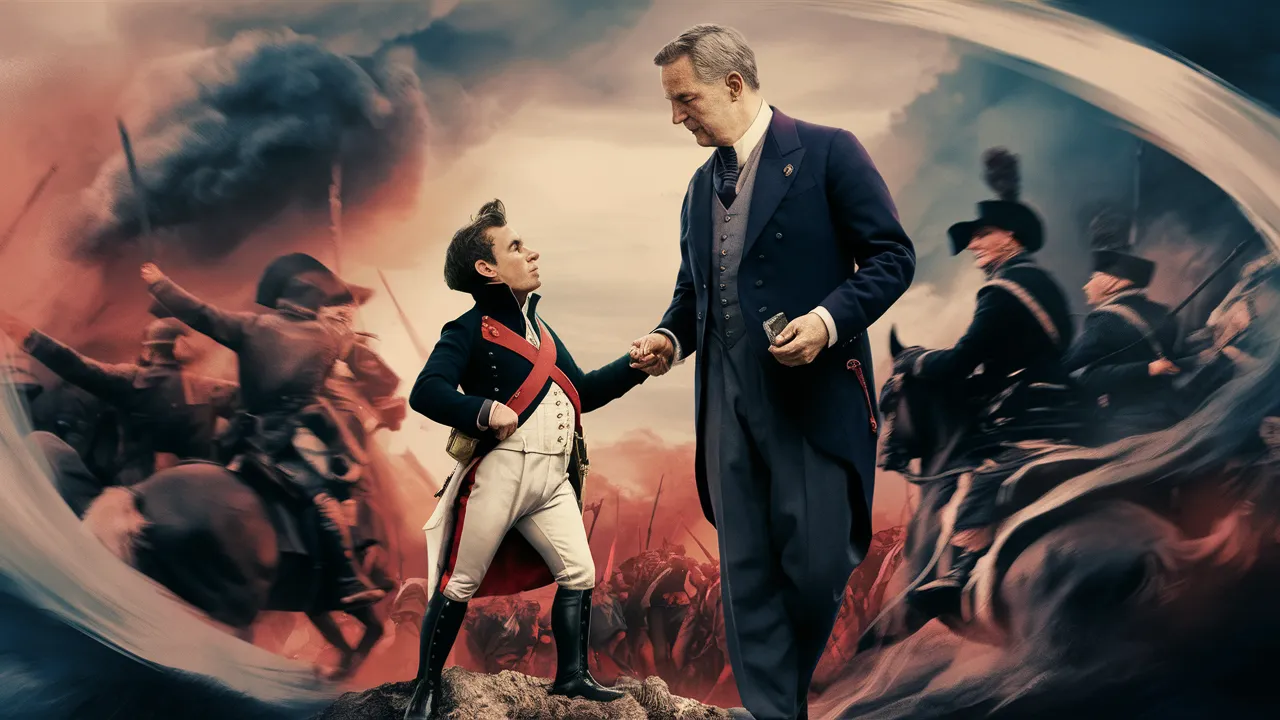17 Things Ridley Scott Got Very Wrong in His Napoleon Movie

Ridley Scott's "Napoleon" is a visual feast, rich in drama and sweeping battle scenes. However, the film takes considerable liberties with historical accuracy. Here’s a detailed look at the top 17 historical inaccuracies in the movie that might leave history enthusiasts both amused and bemused.
17. Napoleon's Height Exaggerated
Despite the common myth, Napoleon was not exceptionally short; he stood about 5 feet 6 inches tall, which was average for his time. In the film, however, Joaquin Phoenix portrays him as significantly shorter, reinforcing outdated stereotypes rather than historical facts.
16. Over-Dramatized Battle Scenes
The film's battle scenes, while visually striking, often compromise historical accuracy for dramatic effect. For example, Napoleon's strategic use of artillery and troop movements are simplified, focusing more on individual heroics than on the complex tactics that defined his campaigns.
15. Josephine's Portrayal
The movie depicts Napoleon and Josephine's relationship as a sweeping romance, overlooking the nuances and challenges they faced. Historically, their marriage was marked by personal and political tensions, notably strained by Josephine's inability to produce an heir and her past relationships.
14. Misplaced Military Tactics
Scott's portrayal of military tactics often resembles choreographed dance rather than authentic Napoleonic warfare. The film features formations that prioritize aesthetic appeal over historical accuracy, neglecting the tight, practical formations that were a hallmark of the era.
13. Fabricated Frozen Lake
A significant historical liberty is the inclusion of a dramatic frozen lake in a battle scene. This addition, while visually captivating, has no basis in the actual military records of Napoleon’s battles, reflecting Scott’s penchant for adding "cool" elements to enhance the narrative.
12. Napoleon's Horse vs. Mule
In reality, Napoleon was known for his practical choice of mounts, often preferring a mule for its sure-footedness in rough terrain. The film, however, opts to show him on a majestic horse, catering more to the heroic image than to the historical fact.
11. Embellished Uniforms
The uniforms worn by soldiers in the movie are far too pristine and colorful for the brutal realities of 19th-century warfare. Historically, uniforms would have been dirtied by mud and faded by sun, not the vibrant, spotless attire depicted on screen.
10. Architectural Anachronisms
The movie inaccurately includes modern architectural elements, such as the Louvre's Glass Pyramid and the Grand Palais, both of which were constructed long after Napoleon's time. These elements serve more as visual enhancements than accurate historical depictions.
9. Geographical Errors
Scott's film also stumbles with its geographical portrayals. For instance, it depicts Corsica with mountains more akin to the Alps than its actual topography. Additionally, battle locations sometimes shift inexplicably between vastly different landscapes, such as from the steppes of Russia to the fields of France.
8. Historical Character Exaggeration
Napoleon's charisma and leadership are exaggerated in the film, with Joaquin Phoenix's portrayal amplifying his emotional volatility and hubris. While these traits make for a compelling character, they do not fully align with the more measured and strategic personality documented in historical records.
7. Romanticized Egyptian Campaign
The Egyptian Campaign is portrayed with a heavy dose of romanticism, focusing on Napoleon's fascination with the Pyramids and his supposed personal revelations, which are not substantiated by historical evidence.
6. Inaccurate Costume Details
Costume inaccuracies abound, with shiny buttons and overly elaborate uniforms that seem untouched by the hardships of war. These details, while contributing to the film's visual splendor, are not reflective of the more functional military attire of the time.
5. Dialogue Liberties
The dialogue in the film often strays into modern vernacular and dramatic flair, which, while engaging, does not accurately represent the linguistic style of the early 19th century. This choice enhances accessibility for modern audiences but at the expense of historical authenticity.
4. Casual Approach to Key Historical Events
Important events such as the Siege of Toulon and the Battle of Waterloo are depicted with a casualness that overlooks their strategic complexities and significance. The film simplifies these events, focusing on their visual and dramatic aspects rather than their historical importance.
3. Overly Dramatic Personal Life
The personal life of Napoleon, especially his relationship with Josephine, is dramatized to emphasize conflict and passion. This portrayal overlooks the more mundane but significant aspects of their partnership, including their political alliance and mutual support.
2. Anachronistic Dining Scenes
Dining scenes in the movie show an array of culinary inaccuracies, from the types of utensils used to the style of meals served. These scenes reflect more of a modern fine dining experience rather than the culinary realities of Napoleon’s time.
1. Simplified Portrayal of Political Intrigue
The complex political landscape of Europe during Napoleon’s reign is overly simplified in the film. Diplomatic interactions and political strategies are reduced to brief, uncomplicated scenes, which fail to convey the intricate web of alliances and conflicts that characterized the period.
While Ridley Scott's "Napoleon" offers a visually stunning and engaging portrayal of one of history's most iconic figures, it takes significant liberties with the facts. This film is a reminder of the balance films must strike between historical accuracy and artistic expression—a balance that leans decidedly toward the latter in this case.
